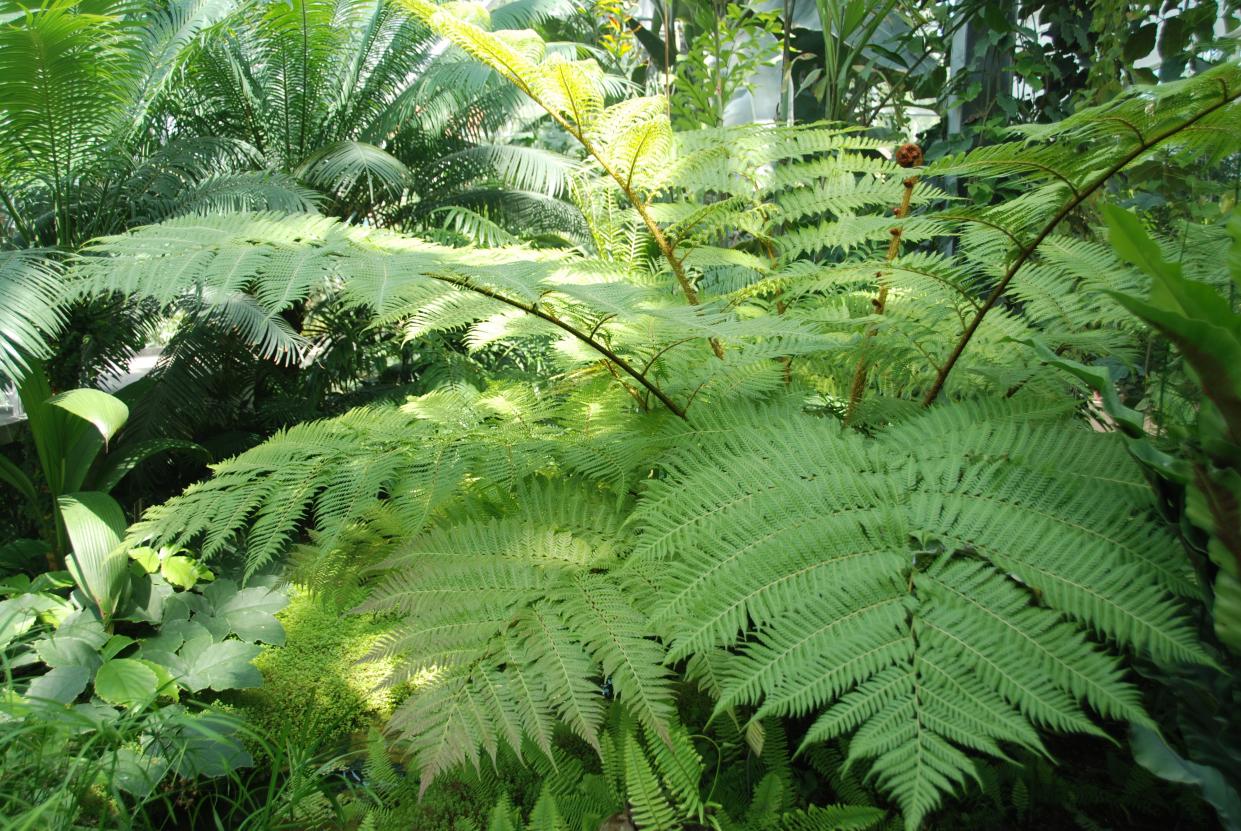CHARLES REYNOLDS: A fine tree fern for Central Florida

Due to our subtropical climate, Florida is one of the few places in the continental U.S. where tree ferns can be cultivated outdoors. The best choice for our landscapes is Australian tree fern (Sphaeropteris cooperi), a potentially 20-foot-tall species that’s been described as elegant and lovely. Native to Eastern Australia, this spectacular fern is surprisingly cold hardy, routinely surviving temperatures in the mid 20s. A fast-growing species, Australia fern has lacy fronds that are 3 to 5 feet long and impart a tropical vibe to moderately shaded, organically enriched and mulched sites.
Another trunk-forming fern for Central Florida is Tasmanian tree fern (Dicksonia antarctica). This species is less graceful and grows much slower than its Aussie counterpart, but it withstands temperatures down to 20 degrees, and its growth rate allows tub cultivation.
Ultimately up to 10 feet tall, Tasmanian tree fern requires the same conditions as Australian tree fern. Note: some people report skin irritations from working with tree fern fronds.
NATIVE SHRUB HAS ODD NAME
Dog hobble is an attractive native shrub that doesn’t receive its due. The species — Leucothoe axillaris — slowly grows 2 to 6 feet tall in moderate to deep shade on organically enriched and mulched sites. Native from Virginia to Florida, dog hobble features thick, glossy, dark-green leaves that are bronze-tinged when young and during winter. In spring, dangling clusters of mildly fragrant, bell-shaped blossoms appear along the stems. Naturally occurring on floodplains, dog hobble — aka coastal leucothoe — doesn’t tolerate prolonged drought or full sun. Install Leucothoe (named for a beautiful lover of the Greek god Apollo) with plants that enjoy similar conditions — ferns, bromeliads and gingers — but allow for dog hobble’s arching, spreading branches. Propagate with seeds and cuttings. Plants are often available online.
NOT REALLY FROM BOSTON
Boston makes me think of the Red Sox, baked beans and a certain fern. But that fern (Nephrolepis exaltata) is actually a Florida native discovered by a Kansan named John Soar, well before Miami became a city. Soar considered the fern attractive, so he shipped clumps to friends in Boston, where they became popular houseplants — and the rest is history.
GROW LOW FUSS HOUSEPLANTS
All houseplants require a degree of care to survive, but the trio I’ll mention today get by with minimal attention: English ivy, snakeplant (Sansevieria) and Chinese evergreen (Aglaonema). These exceptionally undemanding, air-purifying plants aren’t fussy regarding irrigation, need no misting or pesticidal treatments and are content with a single time-release fertilization in spring. In addition, all of these readily available plants will prosper in bright, indirect light. Propagation is also easy, even for novices. English ivy is done via cuttings, while snakeplants and Chinese evergreens are propagated by both cuttings and divisions. The only pruning required will be occasional clippings — with ordinary scissors — of English ivy stems if they become too lengthy.
This article originally appeared on The Ledger: WEEKEND PLANTINGS

